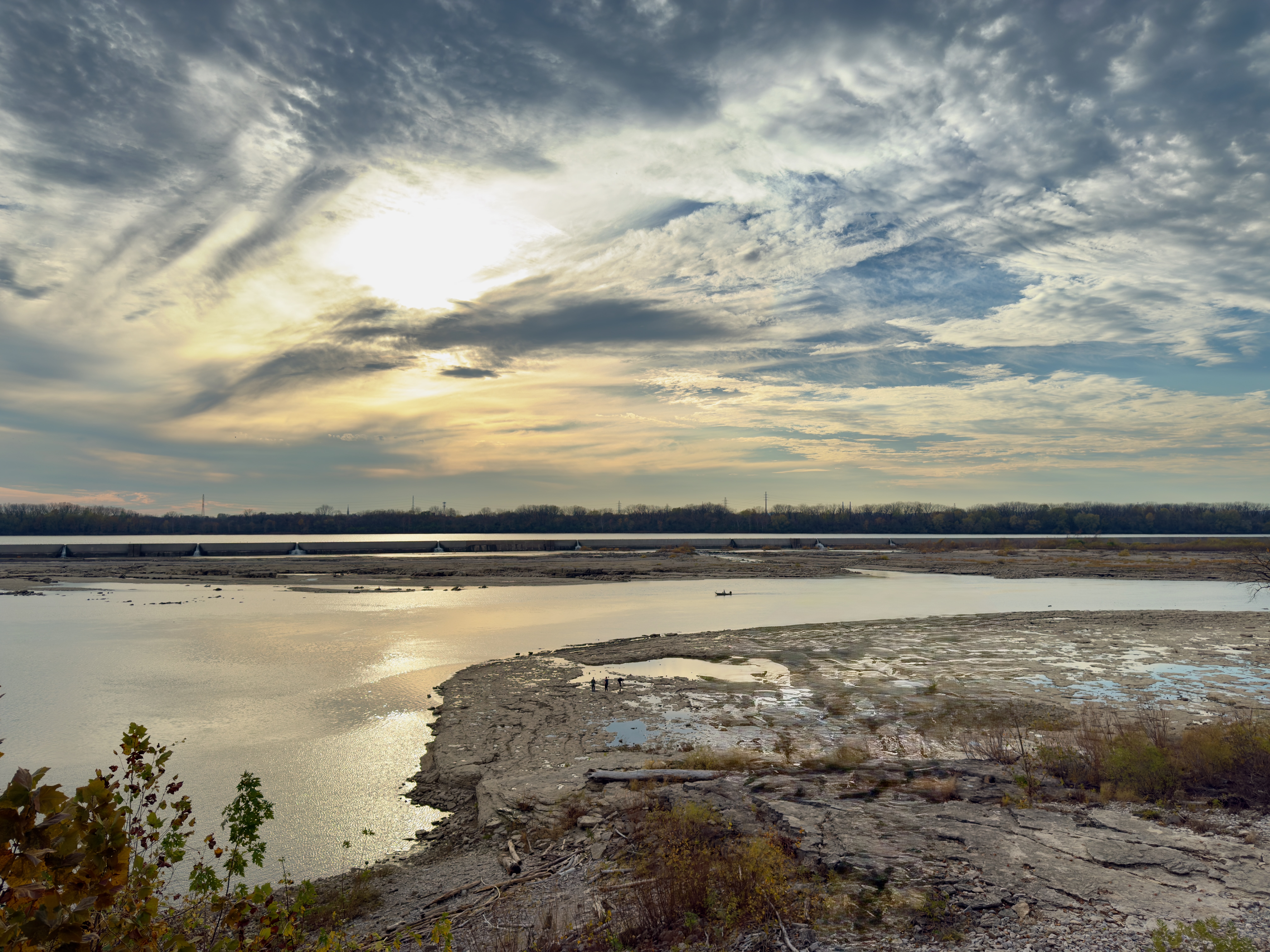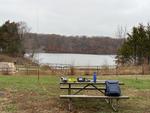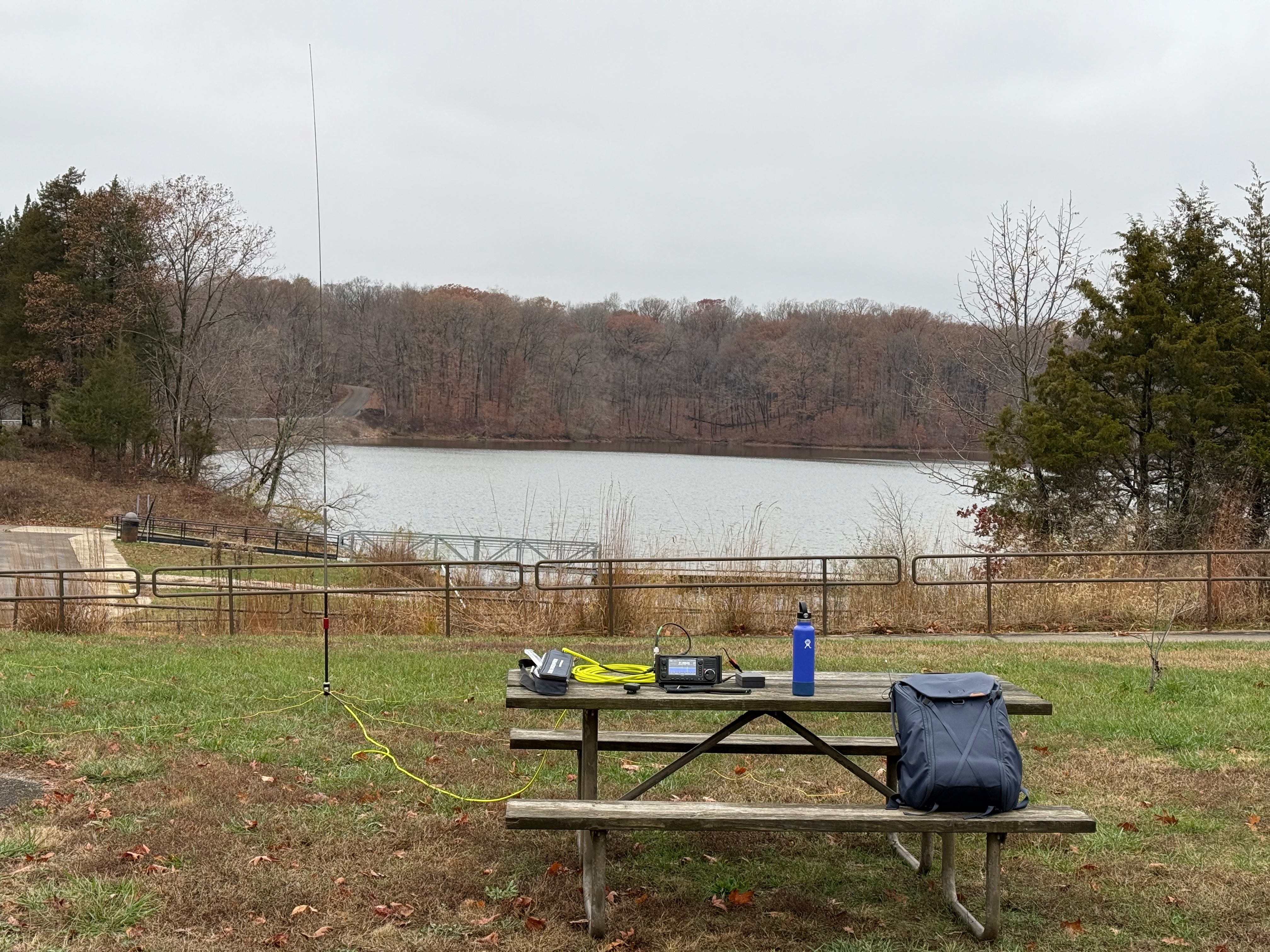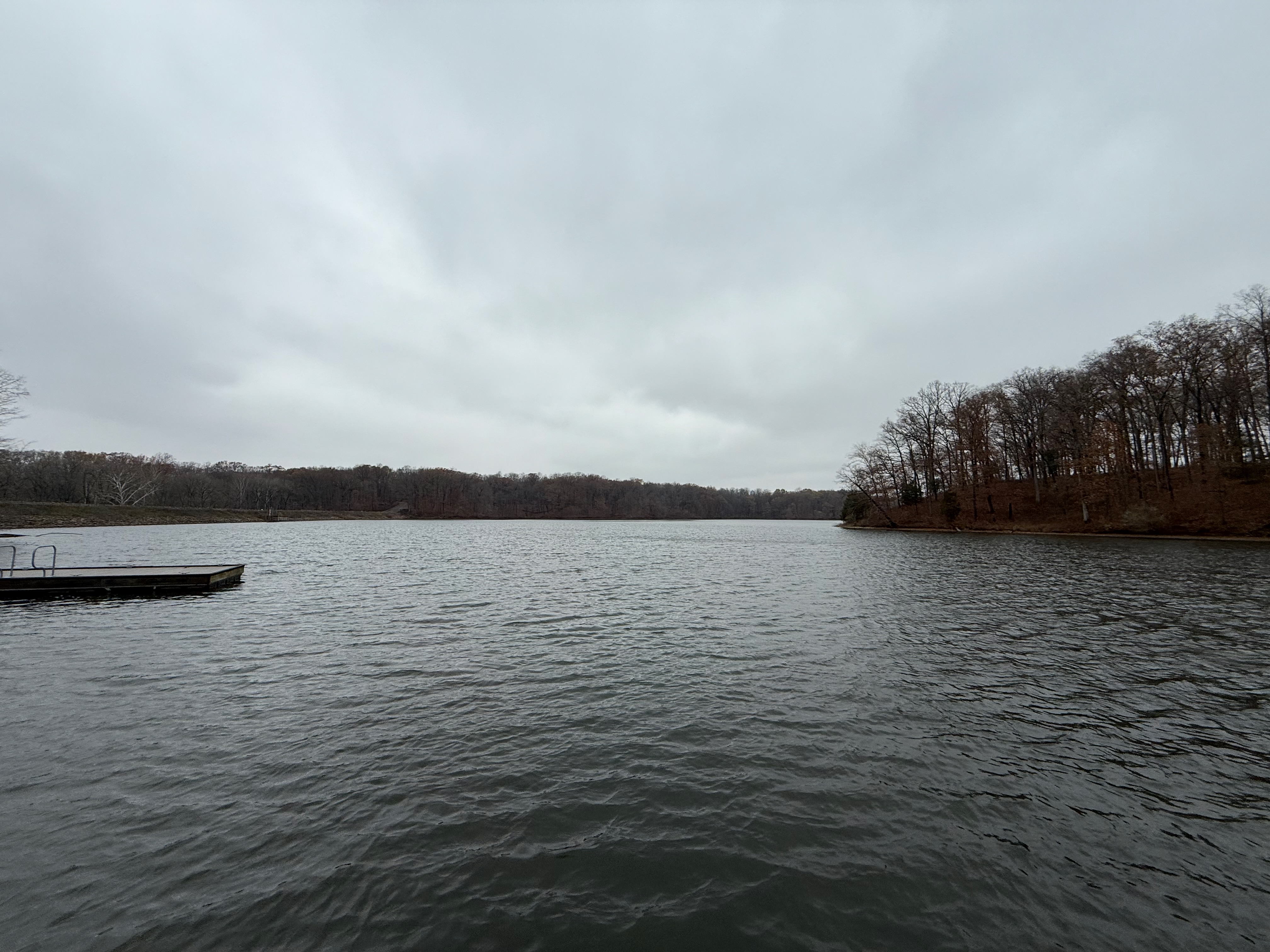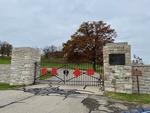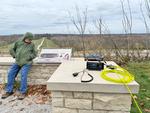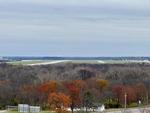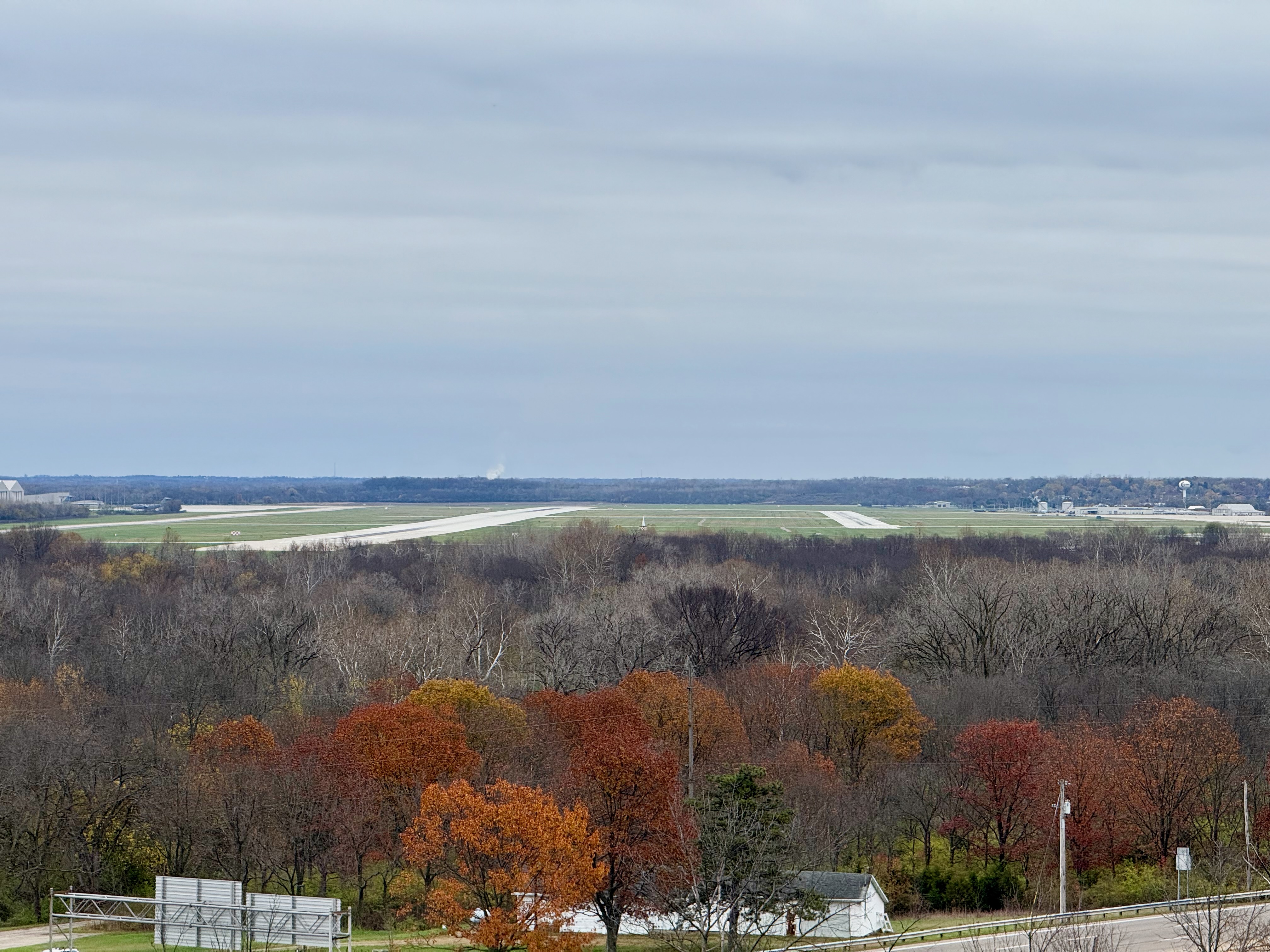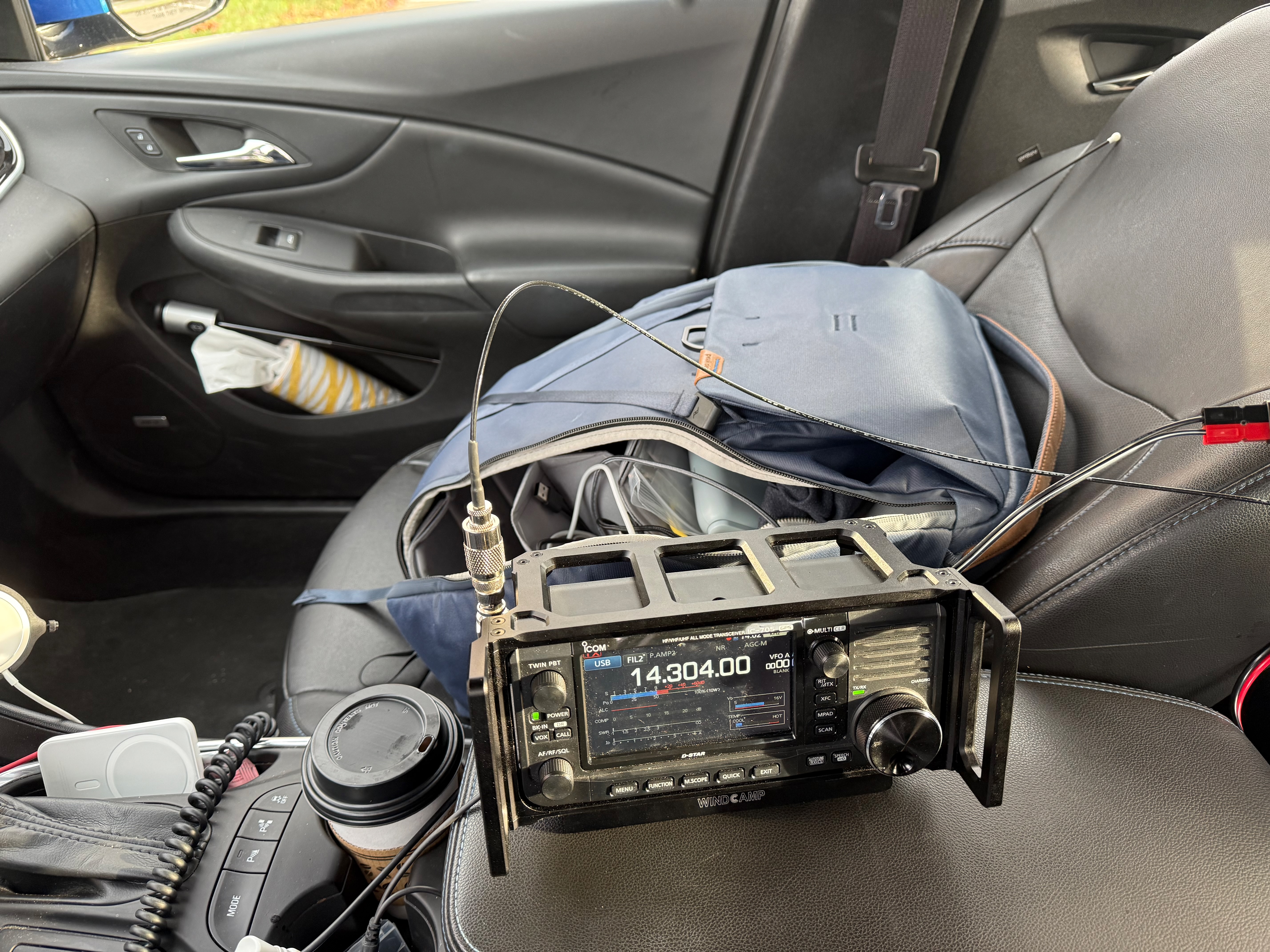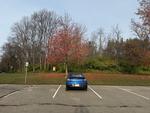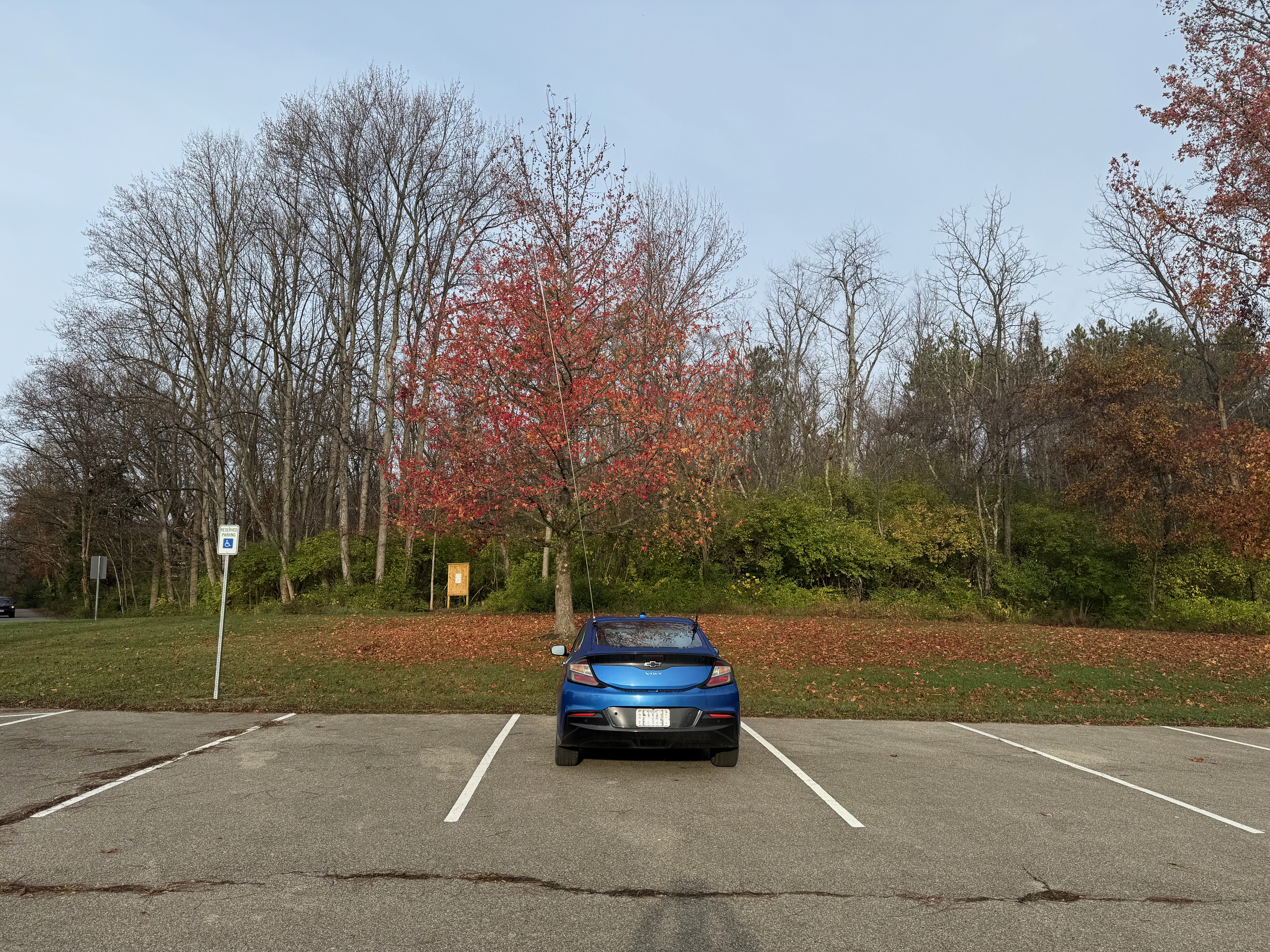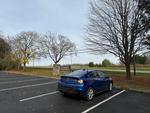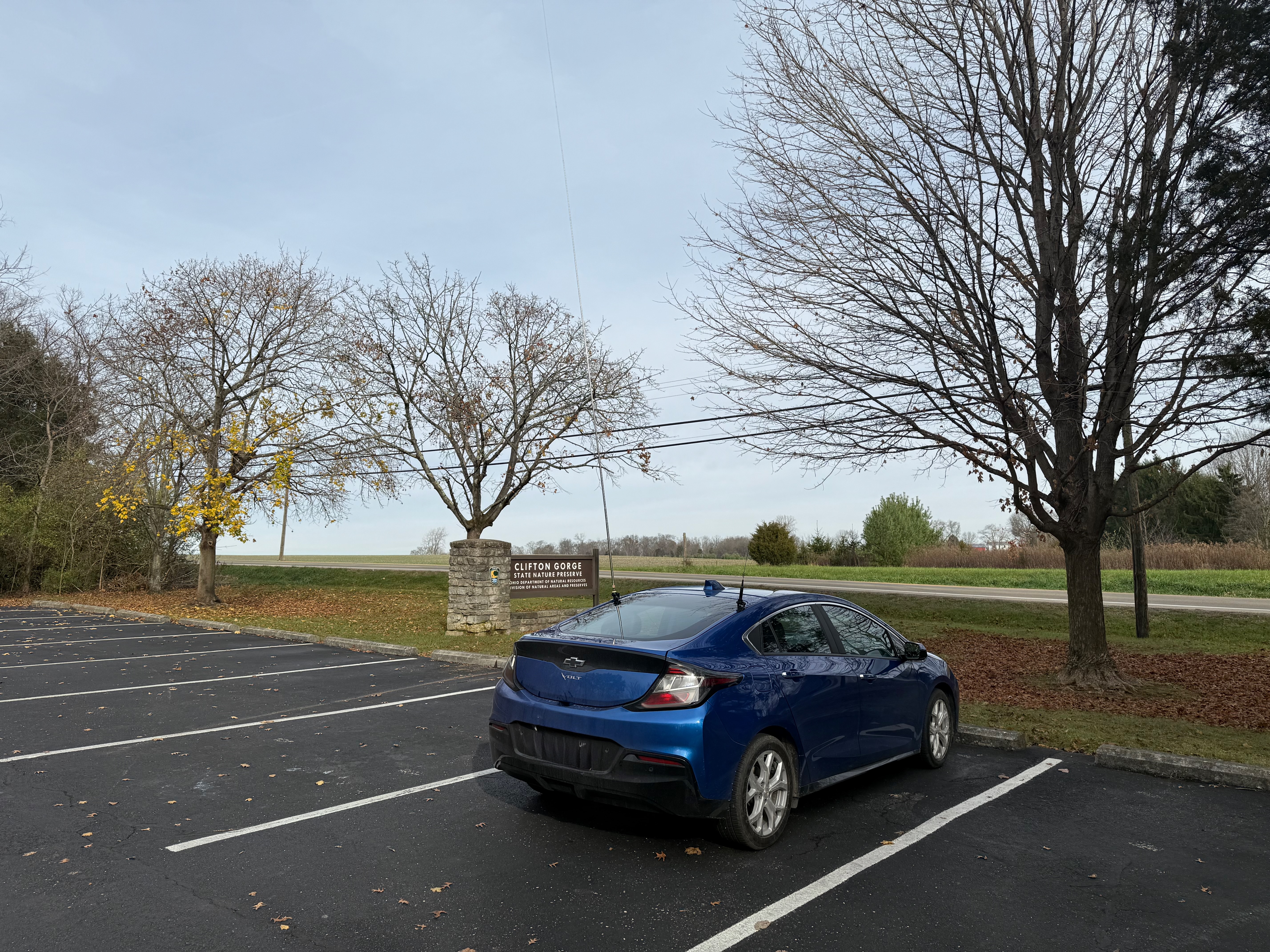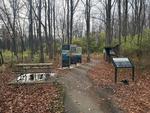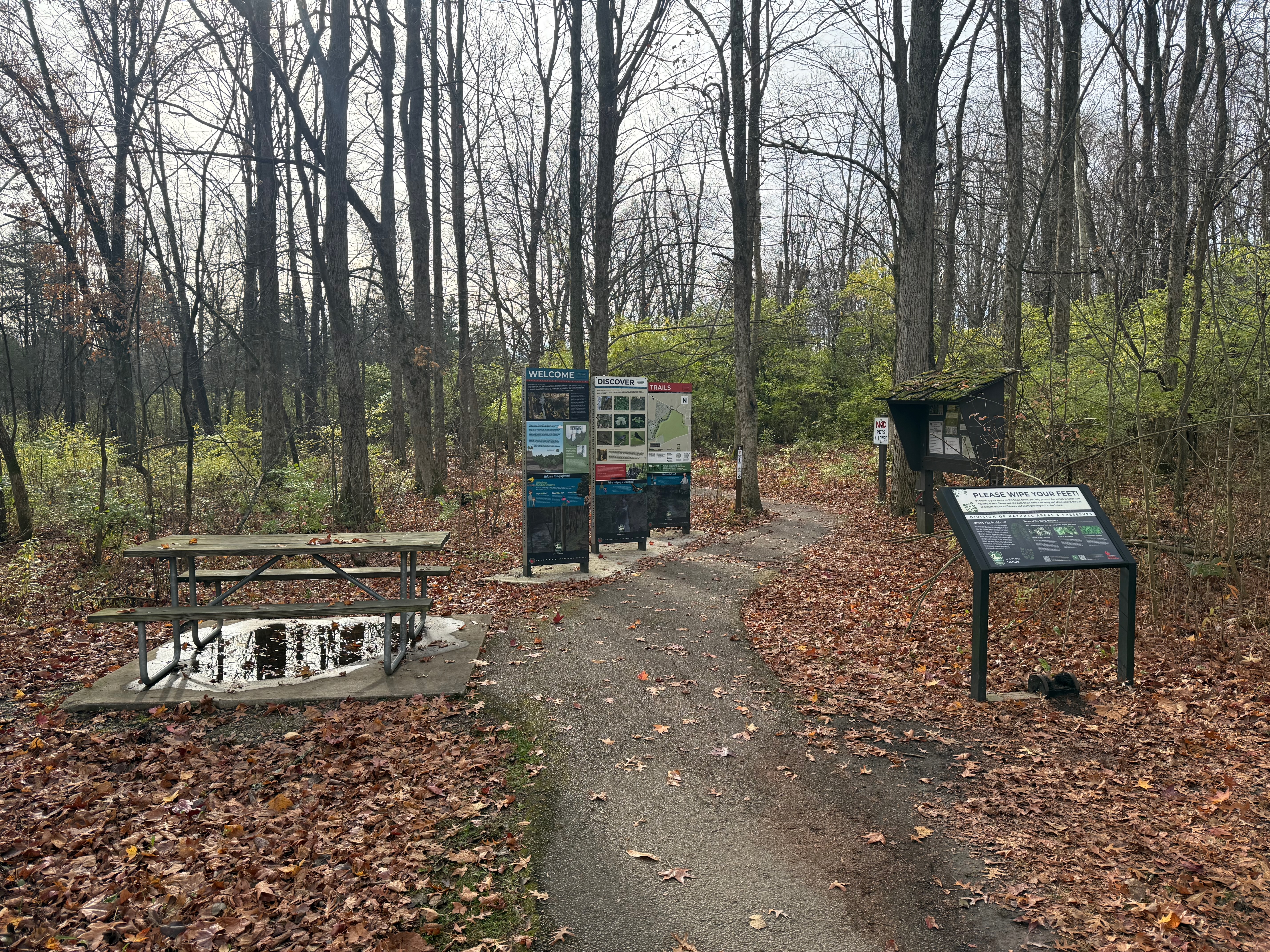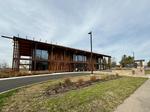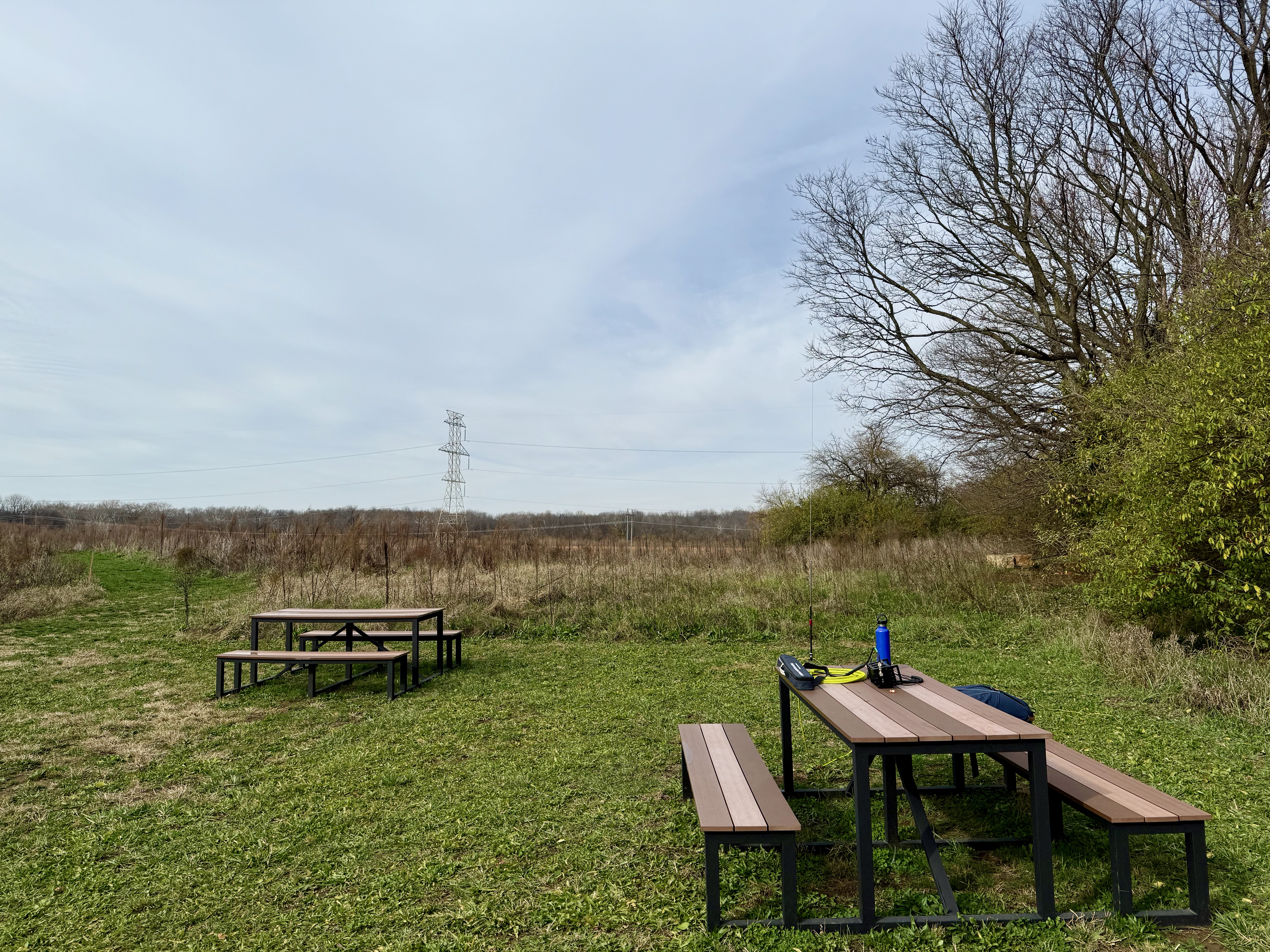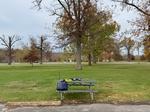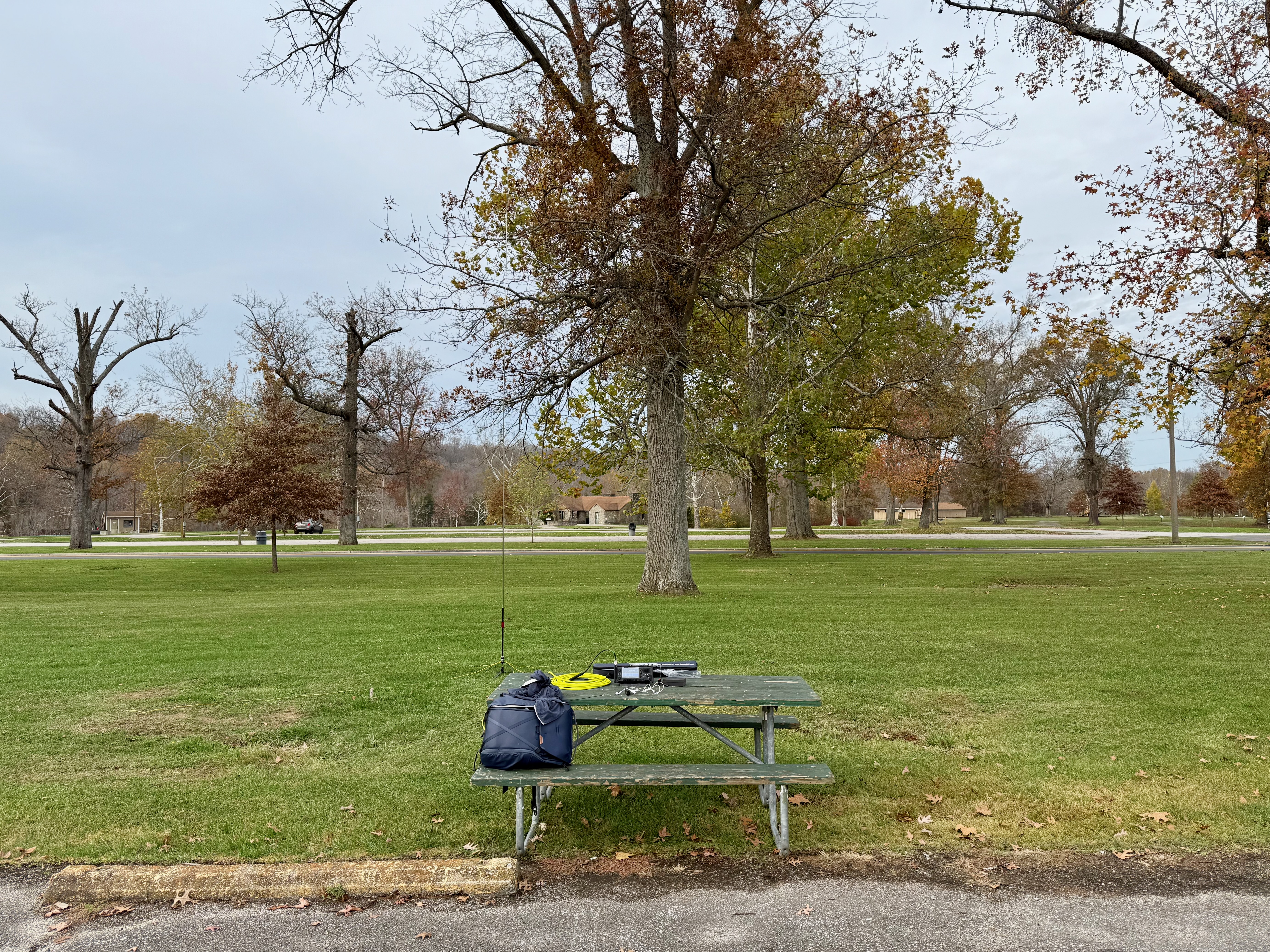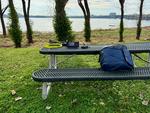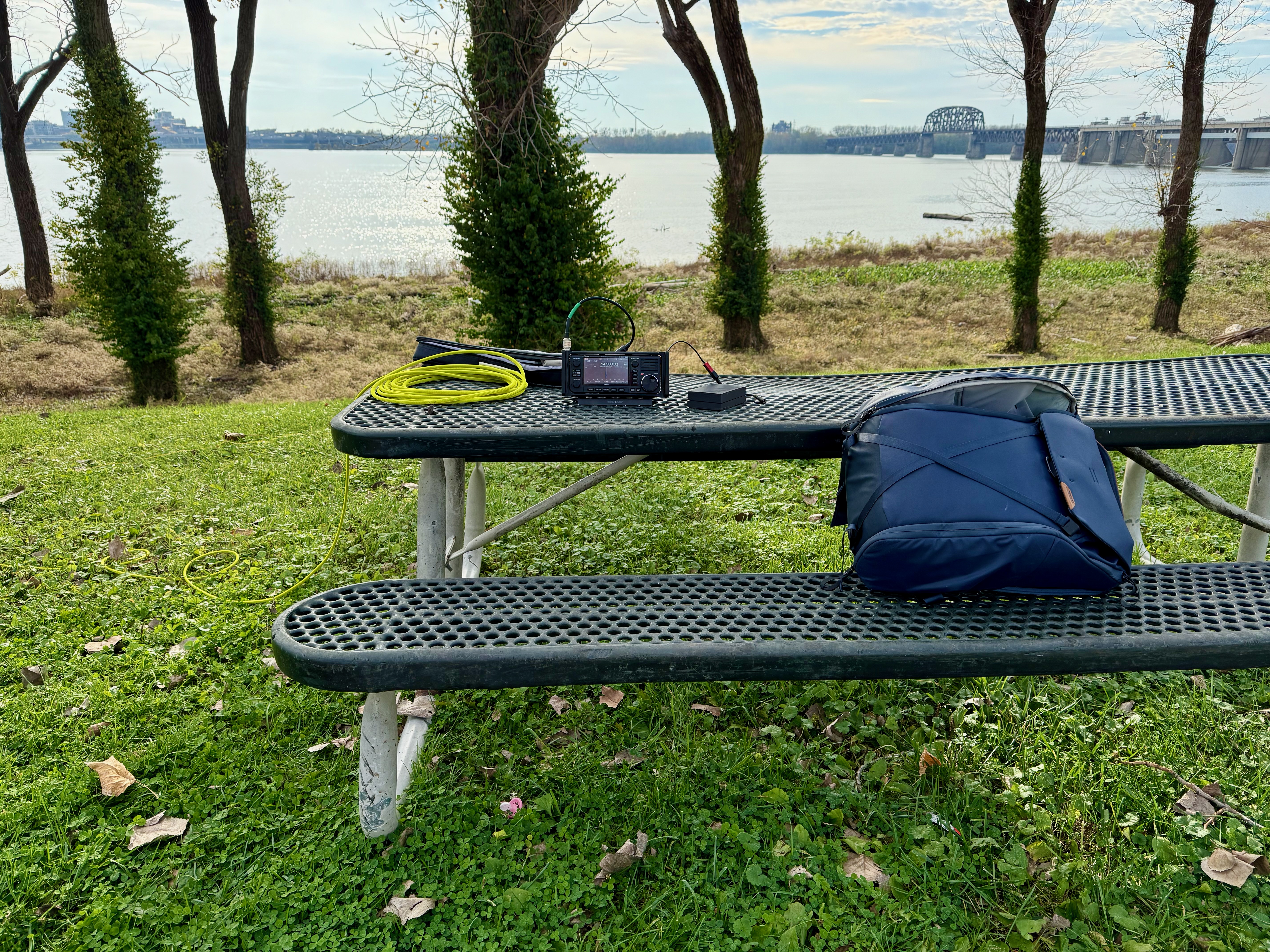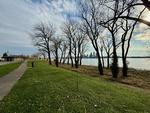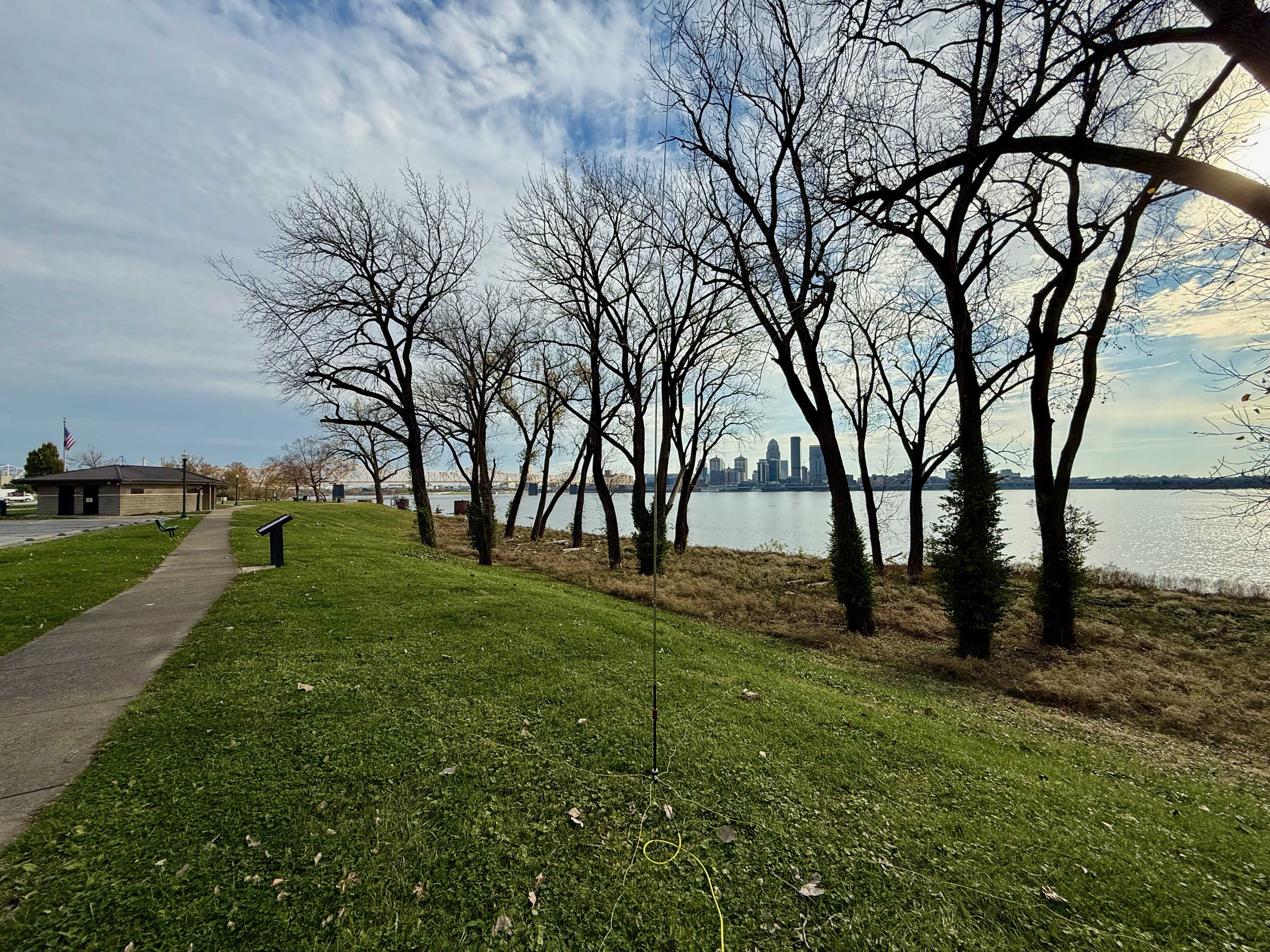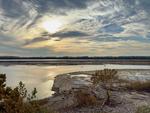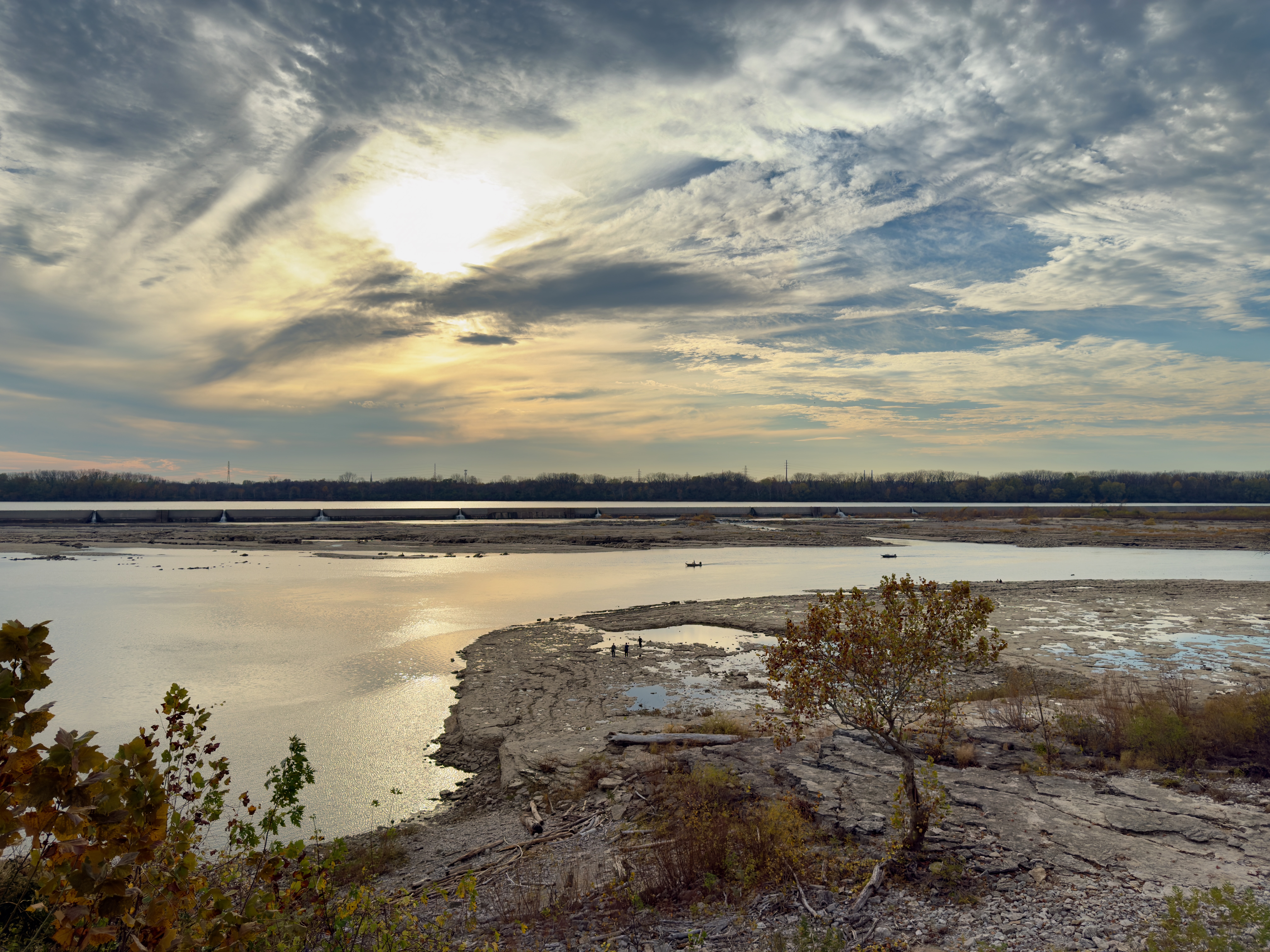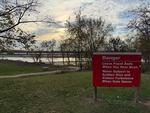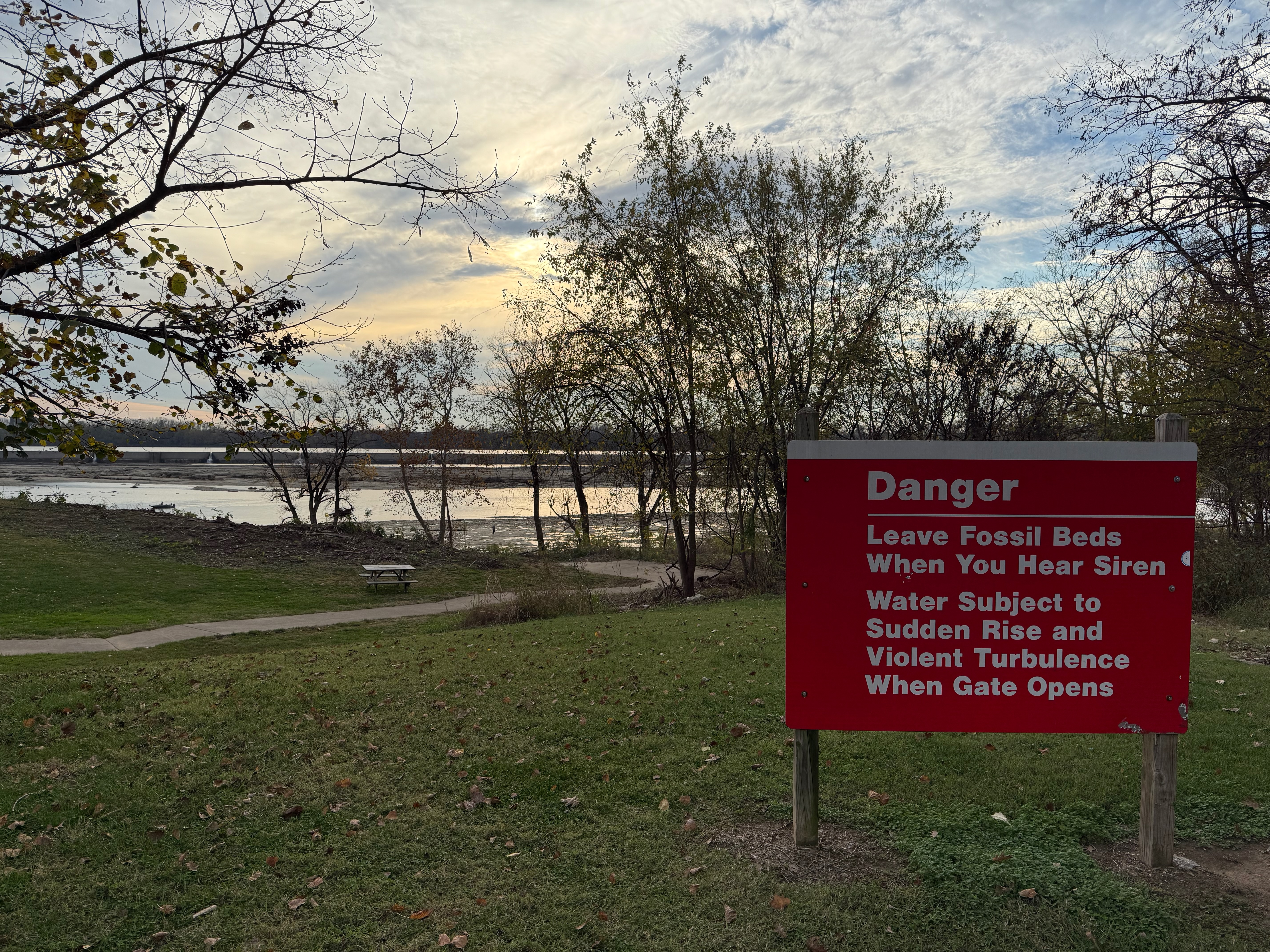POTA Notes: Fall 2024 Ohio Trip

I grew up near Dayton, Ohio and visit my family there a few times a year. My most recent trip was the first one since I started participating in Parks on the Air.
# Lincoln Trail State Park (US-1007)
The first park of the trip was the Lincoln Trail State Park, just south of Marshall, Illinois, about 2 hours east of St. Louis along Interstate 70. It’s a larger park with a number of shelters, campsites, RV parking, a BBQ restaurant and a few boat launches. Towards the southern end of the park there’s a small dam or levee that looked promising with interesting views so I set up next to a parking lot overlooking the lake. There’s a boat launch, outdoor toilet, and picnic tables both out in the open and under some trees. I set up my station on a picnic table in the more open area next to the upper parking lot. It had rained the night before and the winds were gusting over 20 mph so I only extended the MC-750’s whip to the 15 meter band. I quickly made the required 10 contacts, including some DX stations in France and Italy. On the way out I drove the entirety of the interior park road and checked out the BBQ restaurant. Not surprisingly for a Thursday afternoon in November the park was very quiet but there are countless places in the park to setup a station and it seemed like most of the larger parking lots with shelters also had toilets and grills.
# Dayton Aviation Heritage National Historical Park (US-0732)
The “Dayton Aviation Heritage National Historical Park” is a group of parks in the Dayton area. One of the parks, the Carillon Historical Park, may not qualify for Parks on the Air because it seems to be managed by a local group and not a state or federal agency. I’ve been to Carillon Park a number of times but can’t remember having been to any of the other parks despite growing up in the area. The Wright-Dunbar Interpretive Center and Wright Cycle Shop are next door to each other and don’t offer a lot of space to activate from. There’s a small patch of grass between the two buildings that has a few benches under some trees, but I would check with the park office before using that area, it can get pretty busy with visitors. The Paul Laurence Dunbar House is another option with limited yard space but, I would also check with the park staff about a place that would be out of people’s way. Regardless, those locations are constrianed between lots of buildings and may not offer the best environment for getting a good signal out. The Huffman Prairie Flying Field and the Huffman Prairie Interpretive Center, on the other hand, offer more open spaces and have a similarly interesting connection to the Wright brothers.
The Huffman Prairie Flying Field is just that, an open field with no amenities. In the center of the field there’s an open garage and I believe there’s also some kind of observation platform under the trees near the parking lot. White flags mark the edges of the original field and the park is very close to the Wright-Patterson Air Force Base runways, so setting up facing north may give you a good view of some military aircraft operations. The road leading to the field was closed during the week I was in town so my Dad and I opted to visit the Huffman Prairie Interpretive Center instead.
The interpretive center and the associated park is also very close to the base; they share a fence and the road leading up to the park entrance also leads to a gate for the base. My dad and I arrived around 10 a.m. on a Friday to a locked gate with a sign that said the “Wright Memorial” was open from 8 a.m. to 8 p.m. Confused, I called the phone number listed on the website and spoke with a park employee who said the interpretive center is only open on Wednesdays and Thursdays but that she would send a guard out to open the gates to the park itself. About 15 minutes later an officer showed up and opened the gate for us.
A short walk from the parking lot is the main memorial and on the other side of the memorial is a short wall with a great view to the north, including the Air Force Base runways. There are also a bunch of picnic tables and benches scattered around the memorial area. I set up at one end of the wall with my radio on top of the wall. It didn’t take long to get 10 QSOs on 20 meters, maybe the great view of the horizon helped?
For more info check out WD8RIF’s post about activating the site, along with this QRPer post. K4SWL also has a video of his activation at the interpretive center.
# John Bryan State Park (US-1964)
Growing up in the area I have fond memories of John Bryan and the nearby parks so I was looking forward to activating the park. Little did I know it would be the most difficult activation I’ve done.
There are a number of trails in the park, one of which connects to Clifton Gorge to the east and another to Glen Helen Nature Preserve to the west. The forecast called for showers during the day, so I drove to the park to explore and chatted with the park staff about returning in the evening. They said it was fine as long as what I was doing was legal. 🤔
After a night hike in Glen Helen I returned to the park over an hour later than I had expected. While I was setting up for 40 meters I broke the MC-750’s telescoping whip. One of the top sections came out in my hand. Thankfully there’s an extra section of the whip at the end so I had no problems tuning for good SWR. After I got setup I quickly discovered there was a popular contest going on which made it very difficult to find a frequency to operate on. After 20 minutes of calling CQ and only having one station come back just to tell me that they couldn’t hear me I decided to pack up. It was starting to rain and I had plans the next morning so I didn’t want to spend the next few hours failing to make QSOs.
The next night I returned to the park a bit earlier and on a much nicer night with a clear sky and full moon. This time I set up in my car with the whip on the roof, still on 40 meters. The contest was still going on and I just couldn’t find an open frequency to operate on. I was able to get two QSOs in the logbook and thankfully they were after midnight UTC so they’d count towards my 10 if I returned the next morning.
Things improved significantly the next morning. There was a bike race just getting started in the main part of the park so I drove to the Orton Picnic Area which is a more remote part of the park. Since I didn’t see any picnic tables around I once again set up in my car with the MC-750 vertical on the roof. The contest was still going on but it wasn’t as busy as it had been. I found a spot on 20 meters and got the remaining 8 QSOs in a few minutes. I worked a few more stations and headed to Clifton Gorge just a few miles away.
# Clifton Gorge State Nature Preserve (US-7848)
Clifton Gorge is another park that I have fond memories of from my childhood. The park is smaller, and unlike John Bryan, which has lots of open areas for camping and picnics, Clifton Gorge has two small parking lots with direct access to the trailheads. Like its nearby neighbor, it offers some great hikes with interesting history and geology. I set up in the larger parking lot off Ohio Route 343. Things were slower but I was still able to get 14 QSOs in over an hour through the contest. There is a single picnic table at the trail entrance but no other facilities or amenities.
# Great Council State Park (US-11673)
I had expected the previous two parks to take a lot longer to activate given the contest going on. With an extra hour before I had to be somewhere I decided to activate one more park on the way. The Great Council State Park is a new park between Xenia and Yellow Springs that honors the history of the Native Americans in the area. The interpretive center was very well done, I was very impressed with how well-designed all the displays and exhibits were. There’s a trail through the prairie area in the back of the park that has a few picnic tables along one side. If the interpretive center is closed I imagine you could still operate from the parking lot or the park behind the building. I made 12 QSOs on 15 meters in about half an hour, including Spain, Norway, and Mexico.
# General Butler State Park (US-1279)
On the way to Ohio I took the northern route along Interstate 70s; on the way back I took the southern route along interstate 64 through Cincinnati and Louisville. The first park along the route that looked interesting was the General Butler State Park in Kentucky. I only saw a small part of what seems like a very big park with just about every amenity you could think of. I did walk through a large shelter with fireplaces and bathrooms, although the bathrooms are only open if the shelter is rented. There’s another building with bathrooms a short walk away. I set up at a picnic table at the edge of the easternmost parking lot in a freshly mowed area. The grounds crew was mowing for what I assume was the last time that year and I wanted to make sure I didn’t get in their way. Once I got set up I let some of the members of my QRP club know I was operating and was able to get a few of them in the logbook. After a few minutes a work truck pulled up and a guy walked up to me and introduced himself as a new ham and asked about my setup. We chatted for a few minutes, I made a few more QSOs, and then packed up for the next park. 32 QSOs in about half an hour on 20 meters.
# Falls of the Ohio State Park (US-2255)
The final park of the trip was the Falls of the Ohio State Park in Indiana. The park is a narrow strip of land along the Ohio River with a bike path, a number of parking lots, and an interpretive center. There are a lot of options for setting up here; you could even choose to venture out onto the muddy parts of the river bottoms if the water is low enough. I set up at a picnic table on the eastern edge of the park, closest to Louisville. There are bathrooms are few feet away but they were closed for the season. The bands were busy, after a few QSOs on one frequency another station would fade in and I’d move somewhere else only to have the same thing happen again there. The guys in the QRP club helped out again, alerting me to stations I was operating on top of (but couldn’t hear). After 15 QSOs in half an hour I packed up to check out the interpretive center. It was a lot more interesting than I had expected but I only had time to visit the gift shop and bathroom. There is a $2 parking fee, but I wasn’t able to determine if that was anywhere in the park of just for the interpretive center; I’m guessing it’s for the latter.
# Summary
Working a bunch of park activations into a trip to visit my family was a lot of fun and a good way to have some time to myself. I activated seven new parks in five days in three new states. I learned a few lessons along the way. First, check for the contest schedule to get a better idea of what to expect. Second, operating on lower bands at night is more difficult than I expected. Maybe I should use my EFHW as a sloper for those conditions to get some NVIS?
